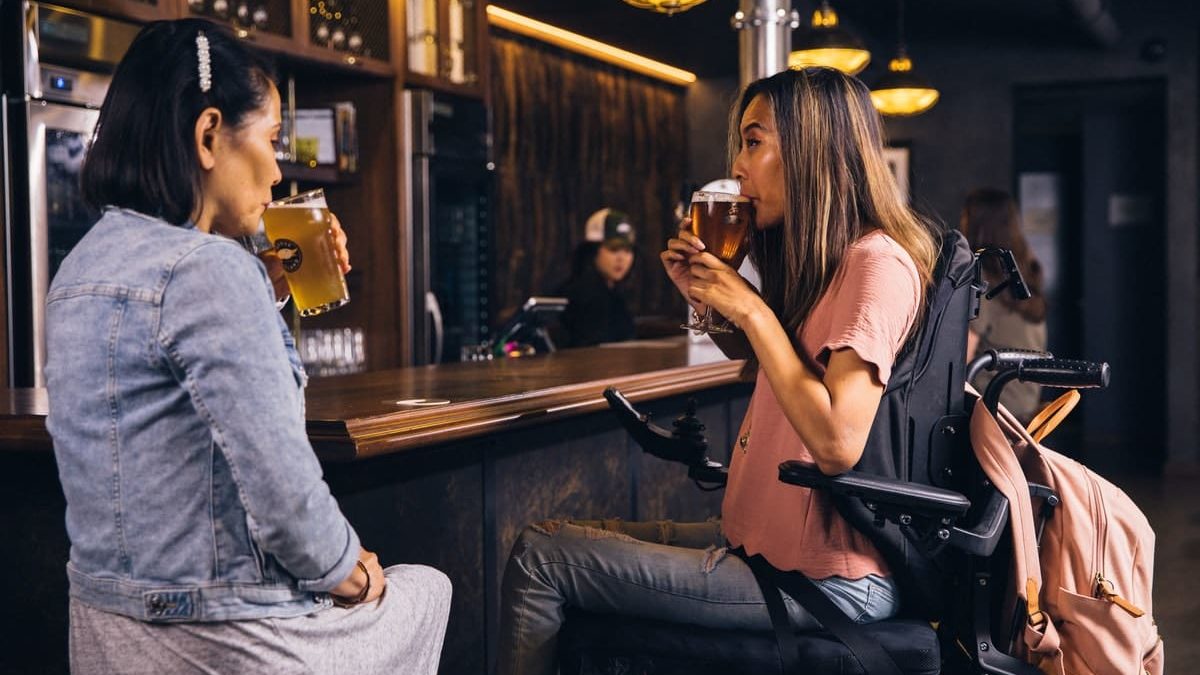Maintaining an active lifestyle is essential, even for persons with a disability. We all need to have a healthy heart and muscles. More so, exercise helps us to relieve stress and mood swings. In turn, we will feel better in our bodies and mind. But how do you stay active when you are living with a disability? Here are seven tips to get you started: –
Table of Contents
Prepare Adequately
First things first, what kind of disability do you have? How much physical activity can you do in your condition? Note that you don’t want to complicate or worsen your state with too much physical activity. Then, talk to your doctor about your plans for staying active. He should tell you what kind and amount of physical exercise is fit for you.
Next, work with an able fitness trainer. We now have reliable instructors giving both online and physical practice. They will help you avoid injuries while maintaining an active lifestyle.
Start Small
Now that you have a go-ahead from your doctor, and have an able trainer to check on you, start small. Remember, our bodies form habits over time. The same case applies when you want to shift from a sedentary lifestyle to an active one. Then, give your body time to adjust to its new norm before scaling up the workouts.
Typical ways to start living an active lifestyle with a disability include taking part in aerobics. Take advantage of your wheelchair stroll around your neighborhood. Or do some brisk walks and swimming. For starters, limit your exercises to 5 minutes per activity. Aim at two and a half hours of physical activity each week.
Engage in Muscle Training Sessions
Now, one major challenge with inactivity is muscle loss over time. This atrophy can worsen one’s condition when living with a disability. Then, combat this challenge by engaging in muscle training sessions. That is, do push-ups, lift weights, or use resistance bands to stretch and engage all your muscles.
Note, get a go-ahead from your trainer or doctor before doing in any muscle workout. In particular, the trainer will scale the exercises to suit your ability. Plus, he will help you set goals with fair time frames.
Spend More Time Outdoors
Did you know that outdoor sports are excellent in improving one’s muscle coordination and improving self-esteem? Yes, most persons with disabilities may find it comfortable to stay indoors, away from unnecessary attention. Yet, the outdoors presents many opportunities to stay active and keep fit. Then, grab a modified bike and go cycling.
Second, you can play golf in a seated or standing position. Third, do you know of hippo-therapy? It is about using horses as part of healing therapy. Other outdoor sports include sitting volleyball and adaptive skiing.
Maintain a Healthy Diet
A muscle training session works best with an accompanying diet. For, you want to eat the right foods that will help you improve your metabolism, and increase your muscle mass.
Then, ensure you eat a balanced diet that includes lots of fruits and vegetables. Be strict on the portions. Check labels when shopping for your groceries. Opt for organic food supplies. Avoid junk food, sweet treats, and oily foods.
Finally, drink lots of water. For water will help you flush out the toxins while keeping your body hydrated before and after a workout.
Join a Support Network
As a person living with a disability, make the journey easier by sharing and learning from others dealing with the same suggested keepmovingcare.com. Then, join a local support network for persons with a disability. This support can be in the form of an online group or a physical meet-up. Here, share tips to overcome the challenges you face as you strive to keep fit.
A support network comes in handy when you feel overwhelmed. It is your safe zone where you go to take a break, reenergize, and get going again. Plus, you’ll access lots of resources from the medical fraternity. Also, you can access financial assistance vital in living a quality lifestyle. For example, you might be able to get disability payments for Afib if you are living with the atrial fibrillation condition.
Manage Stress
Even with a disability, we all have responsibilities that we must fulfill. Hence, if you are a parent, a student, or an employee, you need to have an effective way to manage stress.
First, organize your lifestyle into a practical routine. That is, de-clutter your home. Then, make your home and workspace disability-friendly. Next, engage in relaxation sessions like yoga and meditation. Such techniques help you to get rid of negative energies and tap into your chakras.
Next, accept and know your limits. For it can be stressful and harmful, trying to live in denial of one’s disability. So, never wallow in a pity party. Instead, keep your mind busy and your body active always.
The above tips are general suggestions on how any person with a disability can stay fit. For best results, come up with a custom plan that will factor in your unique needs. Then, liaise with a health professional to stay healthy for a quick recovery.

